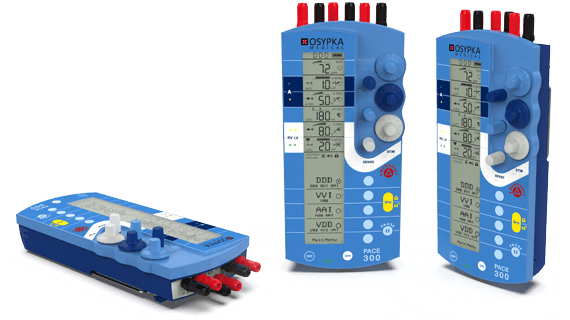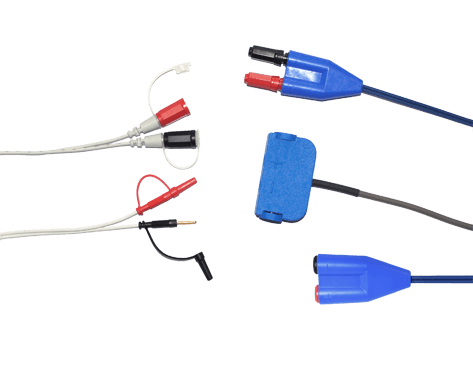PACE® Model 300
Triple Chamber (DDD-BV) Window to the Heart®

PACE® Model 300 is the world’s first triple chamber (DDD-BV) temporary cardiac pacemaker featuring biventricular (BV) pacing capability. In addition to all applications of PACE® Model 203, PACE® Model 300 is especially suited for pacing applications related to temporary cardiac resynchronization therapy (CRT) and complex congenital heart disease.
PACE® Model 300 offers a comprehensive level of customization. Sensing thresholds and stimulation amplitudes can be set separately for both left and right ventricular channels. The interventricular delay (VVD) and the order of ventricular chambers to be stimulated are adjustable (RV first or LV first).
Specialties:
- Three dedicated pacing terminals
- Impedance function for optimal placement of pacing leads
- Autosense function, automatic adjustment of atrial and ventricular sensitivities
- Pause function, measures automatically intrinsic heart activity variables
- Rapid atrial pacing rate up to 1,000 ppm for managing atrial tachyarrhythmias
- Fast access to triple, dual and single chamber pacing modes:
DDD (BV, RV, LV), VVI (BV, RV, LV), AAI, VDD (BV, RV, LV), D00 (BV, RV, LV), V00 (BV, RV, LV), A00, DVI (BV, RV, LV), DAI (BV, RV, LV), VAT (BV, RV, LV), AAT, DDD+AT (BV, RV, LV), DAT (BV, RV, LV), DDI (BV, RV, LV)
Novel technologies and pacing options of PACE® Model 300 makes it the only choice for DDD-BV temporary pacing in the OR, ICU and for electrophysiology studies.
PACE® Model 300 temporary cardiac pacemaker is designed to be used with cardiac pacing lead systems for temporary atrial, ventricular, A-V sequential, or BV pacing.
PACE® Model 300 has applications where such pacing modes are indicated for therapeutic or prophylactic purposes.
Key Features of
PACE® Model 300
Extension Cables
PACE® Model 300
An extension cable can help to position the pacemaker safely, clearly visible and accessible.
All extension cables that can be used with the PACE® Model 300 to connect all common stimulation electrodes are presented in this brochure for easier understanding.

